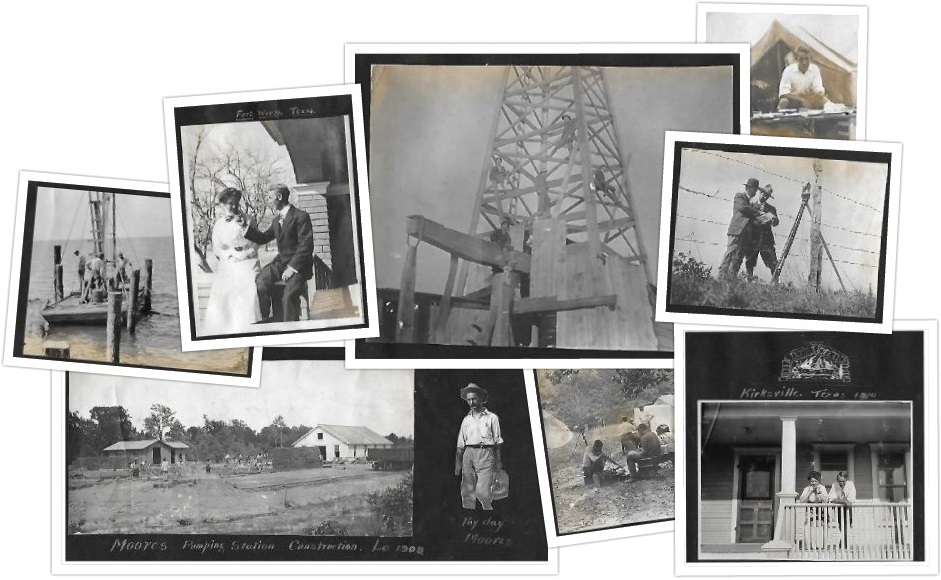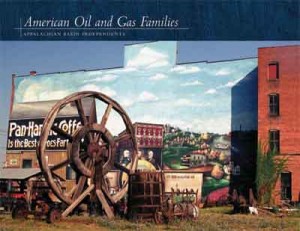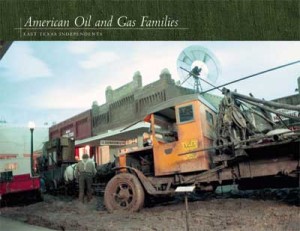Community museums preserve personal and professional stories of U.S. petroleum history.
Personal stories of petroleum careers are important, and the American Oil & Gas Historical Society (AOGHS), community museums, professional associations, and many others are creating ways to preserve written and oral histories of oil families.
Whether independent producers, drillers, landmen, roughnecks, geologists, petroleum engineers, pipeline builders, service companies, refiners, shippers, traders or service station owners — personal histories in family records are important records.
Many community oil and gas museums conduct interviews for oral histories; some accept photos and manuscripts for their collections. If your are seeking research help or want to share information, please see recent posts from members on the historical society’s Petroleum History Research Forum.
Preserving Oil Patch Family Stories
November 2023
1921 Atlantic Refining Company Publication needs a Home
A family that has preserved its connection to U.S. refining history is seeking a home for a 1921 company booklet. Jane Benner’s grandfather, George Edward Cooper (pictured in the publication), worked for the Atlantic Refining Company, which became ARCO in the mid-1960s.
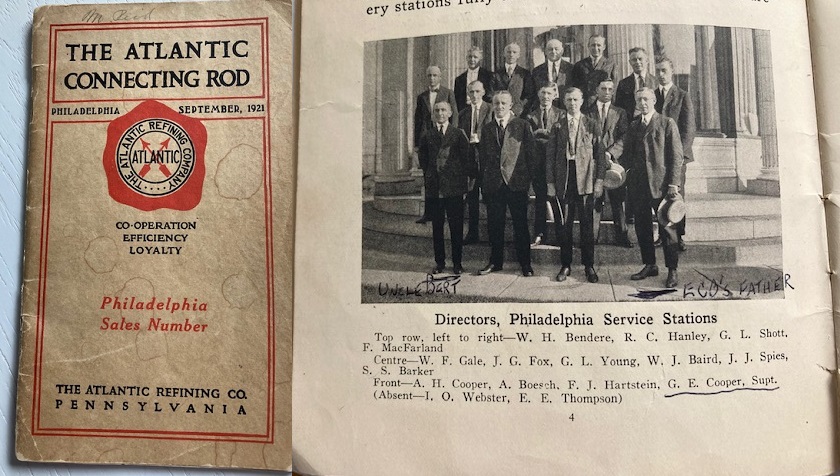
Pictured in a company publication, George Edward Cooper stands among other Atlantic Refining Company salesmen in 1921.
Atlantic Refining Company career included helping select locations for some of Philadelphia’s earliest gas stations. She has been seeking a permanent home for her family’s prized issue of “The Atlantic Connecting Rod.”
Learn more in Preserving a 1921 Atlantic Refining Publication.
Renee’ LaViness seeks Oil History
While conducting ancestry research, Renee’ LaViness discovered Kansas and Oklahoma newspaper clippings that confirmed her relative, Mareau Fisher LaViness (1852-1930), took part in the first commercial oil wells in Oklahoma. A superintendent for Cudahy Oil Company, he also was awarded the honorary title “The Father of the Oil Industry in Oklahoma” in 1927.
Cudahy Oil financed drilling of Bartlesville’s historic Nellie Johnstone No. 1 well in 1897.
Learn more (and share research with Renee’) in LaViness Family Oilfield History.
1948 Lane-Wells 100,000th Perforation Scrapbook
Determined to preserve a family’s rare oilfield artifact, Connie Jones Pillsbury of Atascadero, California, contacted the American Oil & Gas Historical Society for help finding a suitable home.
Pillsbury sought to preserve Walter T. Wells’ 1948 original album and guest book (with press-clippings/scrapbook) from the “Lane-Wells 100,000th Gun Perforating Job” event of June 18, 1948.
The service company’s technology milestone celebration had taken place at the Union Oil Company La Merced No. 17 well at Montebello, California.
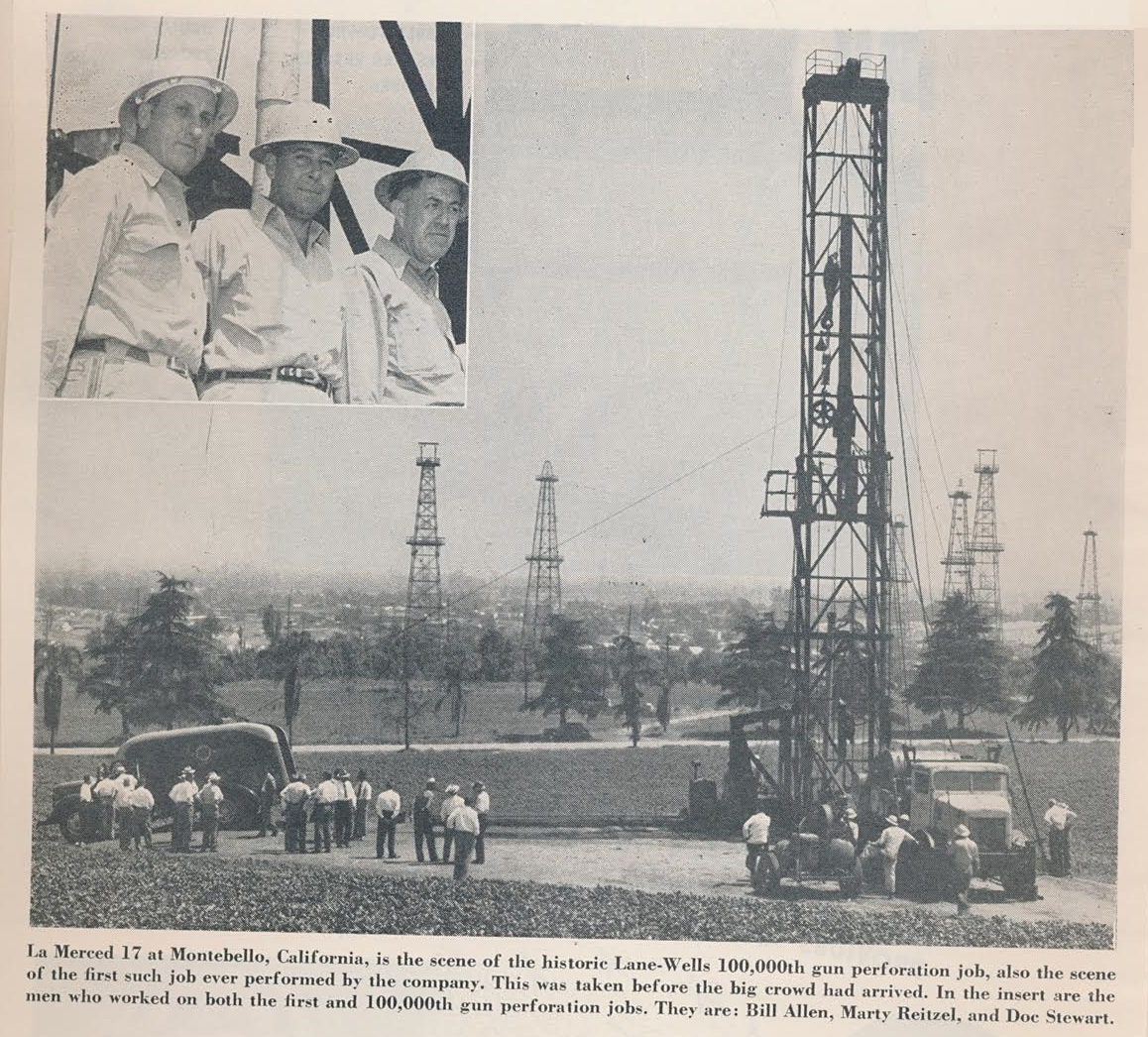
A permanent home is being sought for the guestbook from the “Lane-Wells 100,000th Gun Perforating Job” of June 18, 1948, preserved by the grandson of Walter T. Wells.
Pillsbury and the family of Dale Jones, grandson of Walter Wells, wanted to donate the book to “a good, permanent home” to preserve the record of an event, which had been attended by most of the top players in the oil industry in Los Angeles.
The rare, professionally prepared publication included VIP attendee’s signatures, photographs, and articles about the achievement in well production technology (also see Downhole Bazooka).
Pillsbury’s the Walter T. Wells material was added to archives at the USC Libraries Special Collections — A gift of Connie Pillsbury — on October 27, 2017. Learn more in Lane-Wells 100,000th Perforation.
An Oil Family, The Albert Jeffreys Collection
Many dedicated people have worked in the U.S. petroleum industry since the first U.S. oil well was drilled in 1859. Many left photographs of their careers. Thanks to family members who saved (and scanned) the images, these histories capture life in oilfields.
California resident Sheila Morshead contacted the American Oil & Gas Historical Society about her family’s photo albums – a collection of petroleum-related images documenting her grandfather’s career: “The Albert Jeffreys in Texas, Louisiana, Rumania, Pennsylvania and England, 1904-1913.”
Family photography preserved by his granddaughter, in association with the Spindletop Gladys City Boomtown Museum at Lamar University, Beaumont, Texas.
Learn more in Albert Jeffreys Family Collection— which was added to a Texas energy museum collection in 2016.
—————————————————-
How to Find and Donate to an Oil Museum
Contact this historical society to learn more about how to locate a museum or library for preserving the photos (or objects) you would like to have preserved. Your images can be posted here for museum curators to review – or directly sent to collection curators at appropriate petroleum museums.
Whether emailing AOGHS or sending to museums, be prepared by reviewing your material for the educational value often sought by museums for their collections. Dates and locations are important but other details help.
For example, at the Institute of Texan Cultures (ITC), items (and not just oil-related) offered to the museum permanent collections are evaluated by a collections committee, “to ensure the object fits into our collecting needs.”
The Institute generally only accepts objects with a connection to Texas, although some objects representative of the cultural heritage of Texans are also considered. “To help the committee to make its decision, the curatorial staff needs to know as much as possible about where the item came from, and the people who have owned and used it in the past,” explains ITC, which began in 2013.
If accepted by the committee for the permanent collection, objects donated to the ITC are considered “unconditional and irrevocable gifts” that will be taken care of in accordance with widely accepted museum standards of care for long-term preservation and protection of items.
“Permanent collection objects may be used for exhibitions, research, loan or examination but, ITC makes no guarantees concerning the frequency or duration of such exhibitions,” the institute concludes. Questions? Use this website’s contact page or email bawells@aoghs.org.
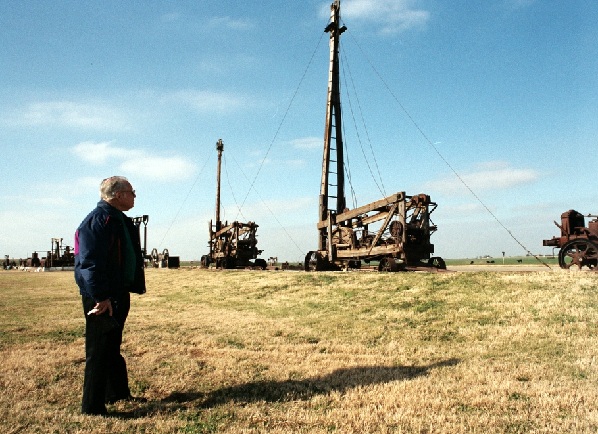
The Felty Outdoor Oil Museum in Burkburnett, Texas, displays oilfield machinery from the height of a 1918 North Texas oil boom. In 2004, cable-tool spudders were watched over by the museum founder’s son, independent oil and gas producer F.T. Felty, Jr. Photo by Bruce Wells.
Preservation Resources
North Texas oil history is preserved at a private museum made up of equipment collected for decades, thanks to a family of independent producers (see the Felty Outdoor Oil Museum ). Other preservation efforts include archives from organization like the Association of Desk and Derrick Clubs (ADDC), which was organized by petroleum industry secretaries in 1951.
Celebrating its 100th anniversary in 2017, the American Association of Petroleum Geologists (AAPG) published the collection of interviews and research, Anomalies – Pioneering Women in Petroleum Geology: 1917 to 2017. Another 2019 collection by a leading industry journalist documented women in the industry’s workforce: Breaking the Gas Ceiling, women in the offshore oil and gas industry.
More Preservation Stories
Son preserves Magazine Ad featuring Dad working in N.Y. Oilfield
While working as a foreman in the oilfield service industry in Pennsylvania and New York, Charles Gerringer’s father operated an innovative diesel-fueled “Caterpillar” D4 tractor. The family kept a trade magazine advertisement featuring Harold Gerringer. Learn more in Oil Well Tractor Keepsake.
A 1941 Question to Con Ed about Light Bulbs
“I have a wonderful short 1941 correspondence from my father Robert asking the Consolidated Edison Company of New York whether you use more energy turning out lights when you leave a room if you know you’ll be back soon…”
Learn more in A 1941 Letter to Consolidated Edison of N.Y.
Los Angeles Family donates Father’s Photography
Seeking to preserve her father’s years as an employee of the Los Angeles Harbor authority, Valerie Raynor contacted the American Oil & Gas Historical Society about donating his photographs to a California museum. She emailed an example featuring the Puente Oil Company.
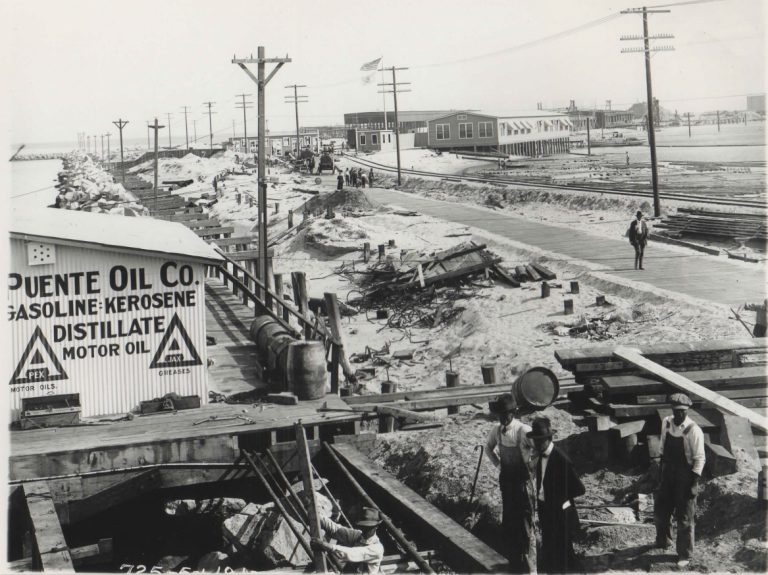
A permanent home was found for the photos of Paul J. Thome, who worked for the Los Angeles San Pedro Harbor in the 1960s.
Although it’s just one photograph from a California port, details of the image help reveal both Los Angeles maritime and petroleum histories. Thanks to museum Director Mary Frances, Valerie quickly found a permanent home for her father’s photo collection at the Los Angeles Maritime Museum. She benefits by receiving high-resolution digital copies from the museum.
At the turn of the 20th century, Puente Oil was a part of a rapidly growing southern California petroleum industry, which had begun in the mountains near Santa Clarita as early as 1865. Learn more in Puente Oil at Los Angeles Harbor.
Oil & Gas Industry Heritage and Family Legacies
The historical society encourages preserving family “oil patch” photo histories – and finding good homes for them in museum or library collections. Many interesting petroleum artifacts – including “Yellow Dog“ two-spouted lanterns – also deserve preservation.
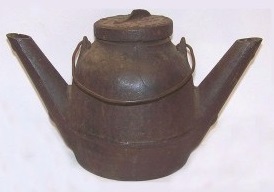
The “Safety Derrick Lamp” was patented in May 1870.
Among this website’s energy education resources are links to oil and gas museums that may help connect historians and curators with industry professionals, their families, relatives and descendants.
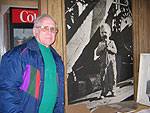
Francis “F.T.” Felty Jr. in 2004 posed beside a family photo of himself at his father’s rig. Photo by Bruce Wells.
Since 2003, the society’s website – with its regularly updated This Week in Petroleum History – has provided milestones and other facts about the industry. Also brought together are people looking for research help, especially those who have documents in their attic and ask, Is my Old Oil Stock worth Anything?
In addition to historical postings, AOGHS features regional petroleum histories with interviews with the local oil producers. Among the articles here are many family stories, including the Felty Outdoor Oil Museum.
Preserving local heritage is often part of the mission for state and county historical societies and museums. Location is important for knowing who to contact about your family images. For petroleum-related museums, many would be interested in considering images – and objects – from a family in their area.
The AOGHS American Oil & Gas Families publications feature regional oil families and petroleum histories of Ohio, West Virginia and Texas (printable PDFs are below).
AOGHS features Texas and Appalachia Oil Families
Two 2003 special historical society publications help tell the stories of family owned petroleum exploration and service companies. To increase energy education resources, especially for science students, the publications show how the industry’s history technological progress offers a context for teaching the modern industry.
Appalachian Basin Independents
Thousands of people in the Appalachian states are employed by the oil and gas industry, the vast majority by small independent producing companies. Located in a former hardware building, the Oil & Gas Museum in Parkersburg, features a giant mural depicting the state’s historic role in exploration. The museum includes four floors of oil patch exhibits.
This AOGHS publication profiles several West Virginia and Ohio communities built on a legacy of petroleum, and the individuals and families who keep the industry productive, providing our nation with domestically produced energy.
East Texas Independents
With a history as rich as its product, the East Texas Oilfield and the people who made their mark during the oil boom are truly deserving of remembrance, honor, and interest. Columbus “Dad” Joiner saw black gold in the parched and arid land of East Texas, and he wasn’t planning on taking no for an answer. Not from oilmen, not from his friends – not even from the land itself.
The East Texas Oil Museum in Kilgore tells this story and much more. Murals, portraits, and antiques educate and fascinate visitors about life in East Texas during the oil boom. This publication profiles the region’s communities and oil families.
AOGHS also features personal oilfield stories, including Oilfield Crew Leader Tamara George, posted in December 2018.
_______________________________
The American Oil & Gas Historical Society preserves U.S. petroleum history. Join AOGHS today and help us maintain this energy education website, expand historical research, and extend public outreach. For annual sponsorship information, contact bawells@aoghs.org. © 2023 Bruce A. Wells.


